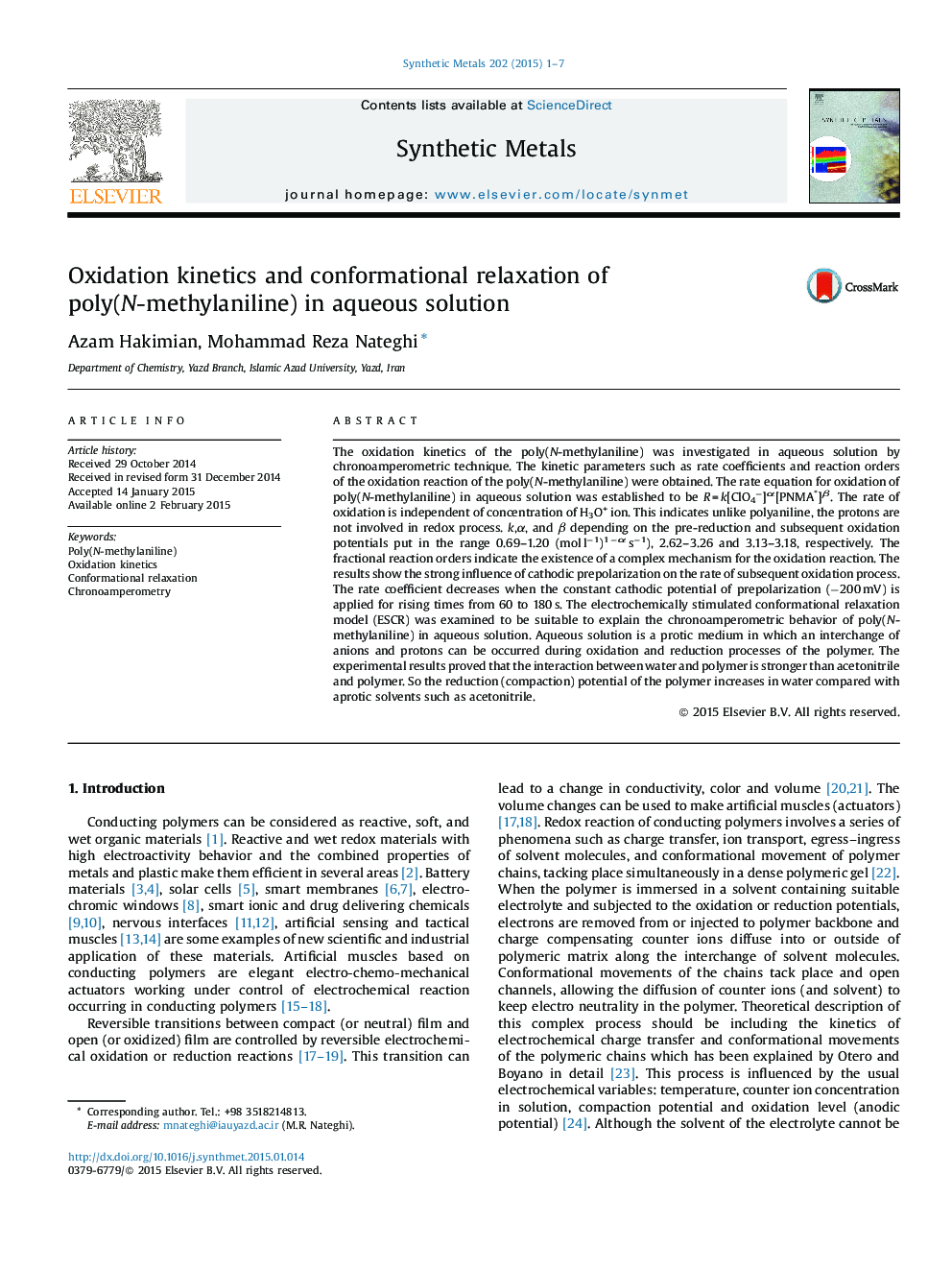| کد مقاله | کد نشریه | سال انتشار | مقاله انگلیسی | نسخه تمام متن |
|---|---|---|---|---|
| 1440664 | 1509375 | 2015 | 7 صفحه PDF | دانلود رایگان |

• Investigation of electrochemomechanical behavior and oxidation kinetics of poly(N-methylaniline) in aqueous solution.
• Employment of ESCR model for interpretation of the cathodic shrinking and memory effect in poly(N-methylaniline).
• Comparison of electrochemomechanical parameters of poly(N-methylaniline) with those of aniline in aqueous solution.
The oxidation kinetics of the poly(N-methylaniline) was investigated in aqueous solution by chronoamperometric technique. The kinetic parameters such as rate coefficients and reaction orders of the oxidation reaction of the poly(N-methylaniline) were obtained. The rate equation for oxidation of poly(N-methylaniline) in aqueous solution was established to be R = k[ClO4−]α[PNMA*]β. The rate of oxidation is independent of concentration of H3O+ ion. This indicates unlike polyaniline, the protons are not involved in redox process. k, α, and β depending on the pre-reduction and subsequent oxidation potentials put in the range 0.69–1.20 (mol l−1)1 − α s−1), 2.62–3.26 and 3.13–3.18, respectively. The fractional reaction orders indicate the existence of a complex mechanism for the oxidation reaction. The results show the strong influence of cathodic prepolarization on the rate of subsequent oxidation process. The rate coefficient decreases when the constant cathodic potential of prepolarization (−200 mV) is applied for rising times from 60 to 180 s. The electrochemically stimulated conformational relaxation model (ESCR) was examined to be suitable to explain the chronoamperometric behavior of poly(N-methylaniline) in aqueous solution. Aqueous solution is a protic medium in which an interchange of anions and protons can be occurred during oxidation and reduction processes of the polymer. The experimental results proved that the interaction between water and polymer is stronger than acetonitrile and polymer. So the reduction (compaction) potential of the polymer increases in water compared with aprotic solvents such as acetonitrile.
Journal: Synthetic Metals - Volume 202, April 2015, Pages 1–7